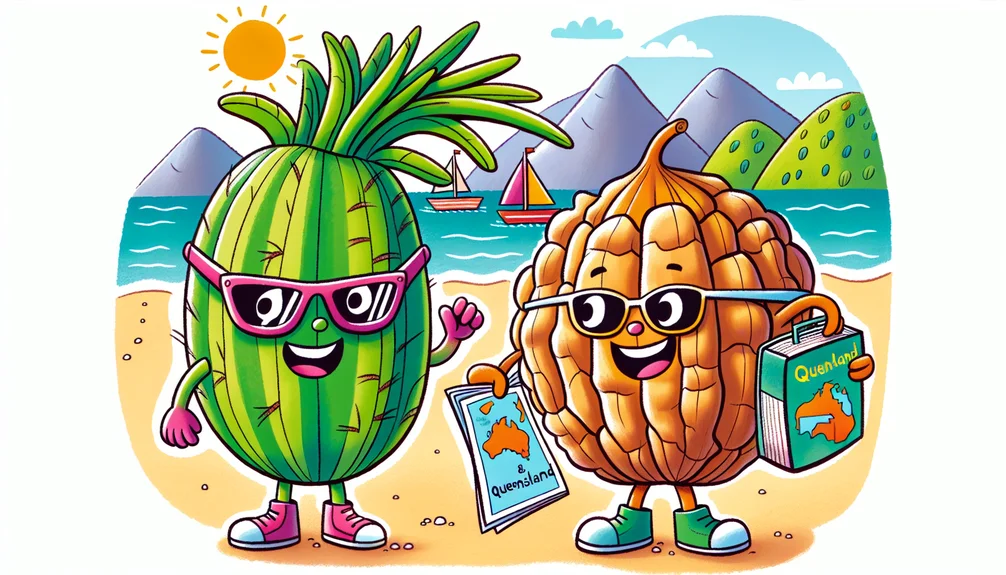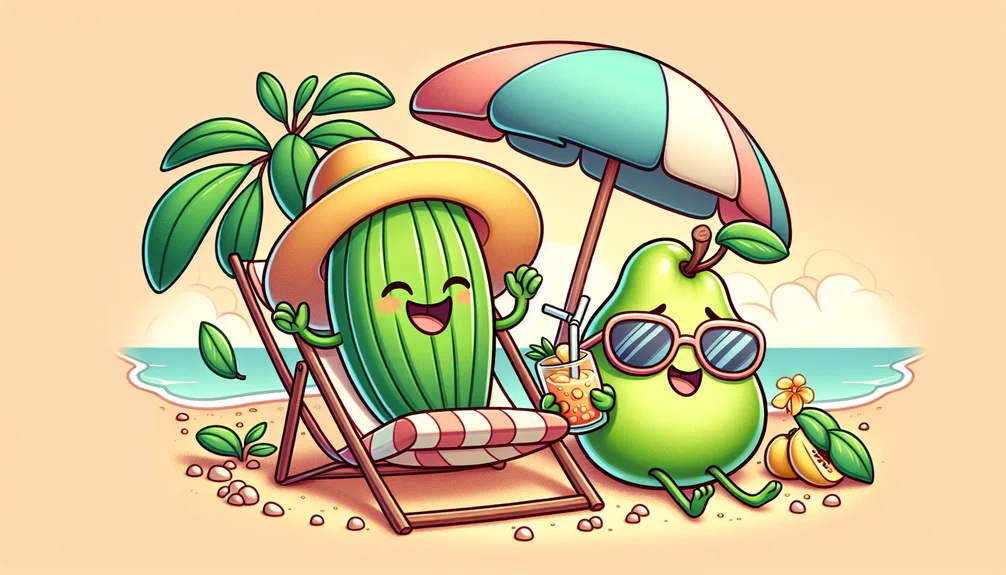12 Vegetables That Start With The Letter Q

Today we will be sharing with you some vegetables that start with the letter Q. Some of these vegetables are not commonly known but are nutritious and can be a great addition to your diet.
You will learn about the origins, nutritional values, health benefits, and culinary uses of some less common but fascinating vegetables.
See also: More Vegetables That Start With
Vegetable Trivia Question
What vegetable is known as the 'Peruvian Apple'? (Answer at the end of the article!)
Vegetables That Start With The Letter Q
Quamash

Quamash, also known as camas, is a plant native to North America, particularly found in the wild meadows of the western states and provinces. This vegetable played a significant role in the diet of Native Americans, who harvested its bulb for cooking. Rich in minerals and carbohydrates, quamash bulbs were traditionally baked or boiled, transforming them into a sweet, nutritious treat. Despite its appealing taste, it's important to differentiate quamash from its poisonous look-alikes. In culinary practices today, quamash can still be used in a variety of dishes, adding a unique, slightly sweet flavor. However, its use is more common in traditional and specialty cooking rather than everyday cuisine.
Queen Anne’s Lace
Queen Anne’s Lace, known scientifically as Daucus carota, is the wild ancestor of the common carrot. It is native to temperate regions of Europe and southwest Asia but has spread widely and can now be found across the world. This plant is renowned not just for its delicate, lace-like flowers but also for its edible roots and seeds. From a nutritional standpoint, Queen Anne’s Lace offers a good supply of vitamins and minerals. It has been used in traditional medicine for its diuretic and cleansing properties. However, one must be cautious as it closely resembles hemlock, a highly poisonous plant. In the kitchen, its young roots can be used much like cultivated carrots, while the seeds are used for seasoning.
Queensland Blue Squash
The Queensland Blue Squash is an heirloom pumpkin variety originating from Australia. Known for its distinctive blue-green skin and rich, sweet flesh, this squash is a favorite among chefs and home cooks alike for its versatility and flavor. It's packed with beta-carotene, vitamins, and minerals, making it an excellent addition to a healthy diet. Additionally, its high fiber content promotes digestive health. Queensland Blue can be roasted, mashed, or used in baking, offering a delightful twist to traditional pumpkin recipes.
"Vegetables are a must on a diet. I suggest carrot cake, zucchini bread, and pumpkin pie." - Jim Davis
Quince
Quince is a unique fruit that bears similarities to pears and apples. Originating from the Caucasus region, it has been grown as a culinary fruit for thousands of years. Quince is high in pectin, making it excellent for jellies, jams, and preserves. It's also loaded with vitamins C and E, fiber, and antioxidants, promoting immune and skin health. Unlike its cousins, quince is rarely eaten raw due to its hard flesh and tart flavor. Instead, when cooked, it transforms into a soft, sweet delicacy, commonly used in desserts, compotes, and savory dishes.
Quinoa Leaves

While quinoa seeds have gained popularity worldwide as a superfood, quinoa leaves are less well-known but equally nutritious. Native to the Andean region in South America, these vibrant green leaves are rich in vitamins A, B, and C, along with minerals like calcium and iron. They offer a protein punch and are a great way to add a nutritious boost to salads, soups, and stir-fries. Quinoa leaves have a mild, slightly nutty flavor, making them a versatile addition to various recipes. They serve as an excellent spinach alternative, providing similar nutritional benefits without the common spinach allergy concerns.
"To plant a garden is to believe in tomorrow." - Audrey Hepburn
Quandong
Quandong is an Australian native fruit, often referred to as the native peach. The fruit is highly valued both for its distinct, tangy flavor and its nutritional profile, packed with vitamin C, E, folate, and magnesium. Traditionally used by Indigenous Australians for both food and medicinal purposes, quandong can be eaten fresh, dried, or cooked. It's commonly found in desserts, jams, and savory sauces, adding a unique flavor to each dish. With no known allergies, quandong is a safe and healthy addition to the diet.
Quinggong
Quinggong, also known as Chinese bellflower, is a vegetable native to East Asia. The plant is appreciated for its crisp, slightly sweet roots and its nutritious, edible leaves. Rich in vitamins A and C, iron, and calcium, quinggong offers various health benefits, including boosting the immune system and enhancing bone health. Its roots and leaves can be used in salads, stir-fries, and soups, offering a unique, refreshing crunch and flavor. Due to its regional specificity, quinggong might not be widely available but is highly prized in traditional Chinese cooking for its nutritional and medicinal properties.
Quenepa
Quenepa, or Spanish lime, is a tropical fruit native to the Americas, cherished for its sweet and tangy flavor. The fruit is rich in vitamins A and C, calcium, and phosphorus, making it beneficial for bone health and immunity. Typically eaten fresh, quenepa can also be turned into refreshing juices, jams, or desserts. Although it is generally safe to eat, the large seed inside requires caution, especially for children. In culinary uses, quenepa adds a tropical twist to dishes and beverages, infusing them with its unique flavor profile.
Quickthorn
Quickthorn, more commonly known as hawthorn, is primarily valued for its flowers and berries in the realm of herbal remedies, but young leaves and buds are edible and nutritious as well. These parts of the plant are a source of antioxidants and have been traditionally used to improve heart health. Quickthorn leaves can be added to salads or brewed as a mild, fruity tea. While not a staple in modern diets, their historical and medicinal significance, alongside their subtle flavor, make them an interesting addition to a variety of dishes.
Queen Palm Fruit

The Queen Palm fruit, produced by the Syagrus romanzoffiana, is a small, orange fruit that encases a nut-like seed. While not widely recognized as a culinary ingredient, the fruit is edible and offers a sweet, jelly-like taste. It contains dietary fiber, vitamin C, and beneficial antioxidants. In some cultures, the fruit is fermented into a wine or jelly. However, it's predominantly appreciated for its ornamental value rather than its nutritional content. When incorporating Queen Palm fruit into the diet, caution is advised to avoid the hard, inedible seed.
Quokka Beans
Quokka beans are not as widely known or used as other legumes but present a unique culinary opportunity. They derive their playful name not from the animal but perhaps from their quaint and curious nature. Nutritional information is scarce as they are not a mainstream food source, and they might be more of an ethnic or specialized ingredient in certain regions. Culinary uses would likely align with other beans—providing protein, fiber, and nutrients in soups, stews, and salads, assuming they offer a similar taste profile and health benefits.
Quisp Quips
This intriguingly named vegetable is likely more myth than reality, a playful addition to spark curiosity. Without concrete information, one can only imagine the whimsical possibilities it suggests. In a culinary context, it could perhaps inspire creative cooking, encouraging exploration of the myriad ways vegetables can enhance our diets.
"Eating a variety of fresh produce is the best way to ensure a healthy and colorful life." - Anonymous
Vegetable Trivia Answer
The 'Peruvian Apple' is actually the cactus fruit known as Quinoa.
Final Thoughts on Vegetables That Start With The Letter Q
We hope that you have learned something new and are inspired to look beyond the ordinary. The world of vegetables is vast and filled with undiscovered tastes, textures, and nutritional benefits. Exploring these Q-named vegetables invites us to expand our culinary horizons and incorporate unique ingredients into our diets.
From the nutritious leaves of quinoa to the exotic tang of quandong, each vegetable offers a distinct flavor and health advantage. These vegetables exemplify the diversity and wonder of nature's bounty. Let's continue to explore and appreciate the lesser-known parts of our gastronomic world.

Related Posts